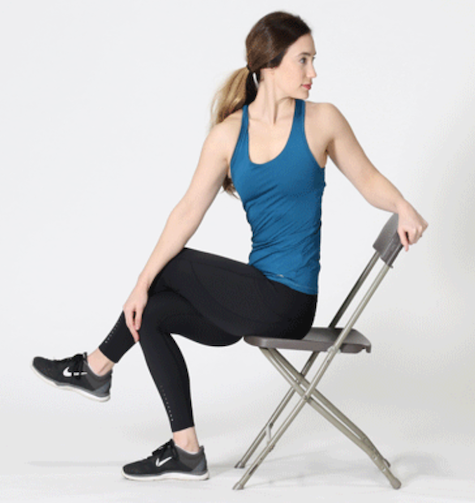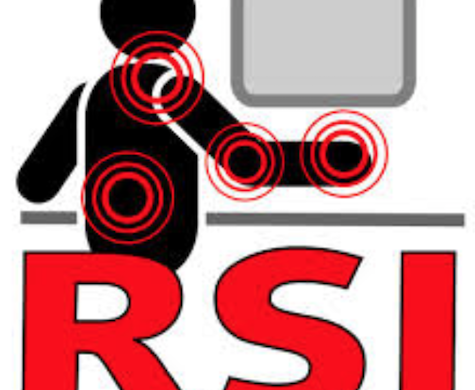
Watch the animated stretch, courtesy of Healthline
Shoulder Rolls are best done standing. Stand with your feet hip-width apart, activate your core to stabilize your hips and keep your entire spine in good alignment. Push your right shoulder forward while simultaneously pulling your left shoulder back, then roll it up and around toward the back while rolling the left shoulder down and forward. It should be like drawing vertical circles with your deltoids. Complete 20 full circles, then repeat in the opposite direction. This will warm and stretch your deltoids, trapezius, rhomboids, and pectoralis muscles. Hip Flexor Stretches require a bit more space than the others. While standing, engage your core to maintain your posture as you take a generous step forward with your left foot. Bend your left knee until it’s directly above your ankle (use a wall or desktop for stability if you feel shaky). Use your abs and glutes to tilt the bottom of your pelvis upward; you should feel a stretch between the top of your right thigh and lowest external oblique muscle. To intensify the stretch, rotate the front-right corner of your pelvis outward. Hold for 30 seconds, then switch sides. Hip flexors get shortened by extended periods of sitting and rarely get stretched passively, so this is especially beneficial for office workers. Forearm Hand & Finger Stretch sequences can be done sitting. First, extend your right arm forward with your palm facing up, and use your left hand to pull your fingers back toward you. You should feel a stretch along the inside of your forearm. Hold for 30 seconds. To vary the stretch, simply adjust the angle of your right arm. Then, with your arm extended, turn your knuckles upward. Grasp your knuckles with your left hand and pull toward your body. This will stretch the top of your wrist and forearm. Hold for 30 seconds, then release. Next, with your arm still extended, grip each finger individually with your left hand, pull and hold for 20 seconds each. Lastly, drop your arm & shake it out. Repeat on the other side. Remember to Stay Consistent With the technology we have at our disposal, the movement required to get the job done has become very limited, more repetitive and mechanical. Do yourself a favor, give your body a break every couple hours with this easy-to-do stretch routine.

Leave a Reply
You must be logged in to post a comment.